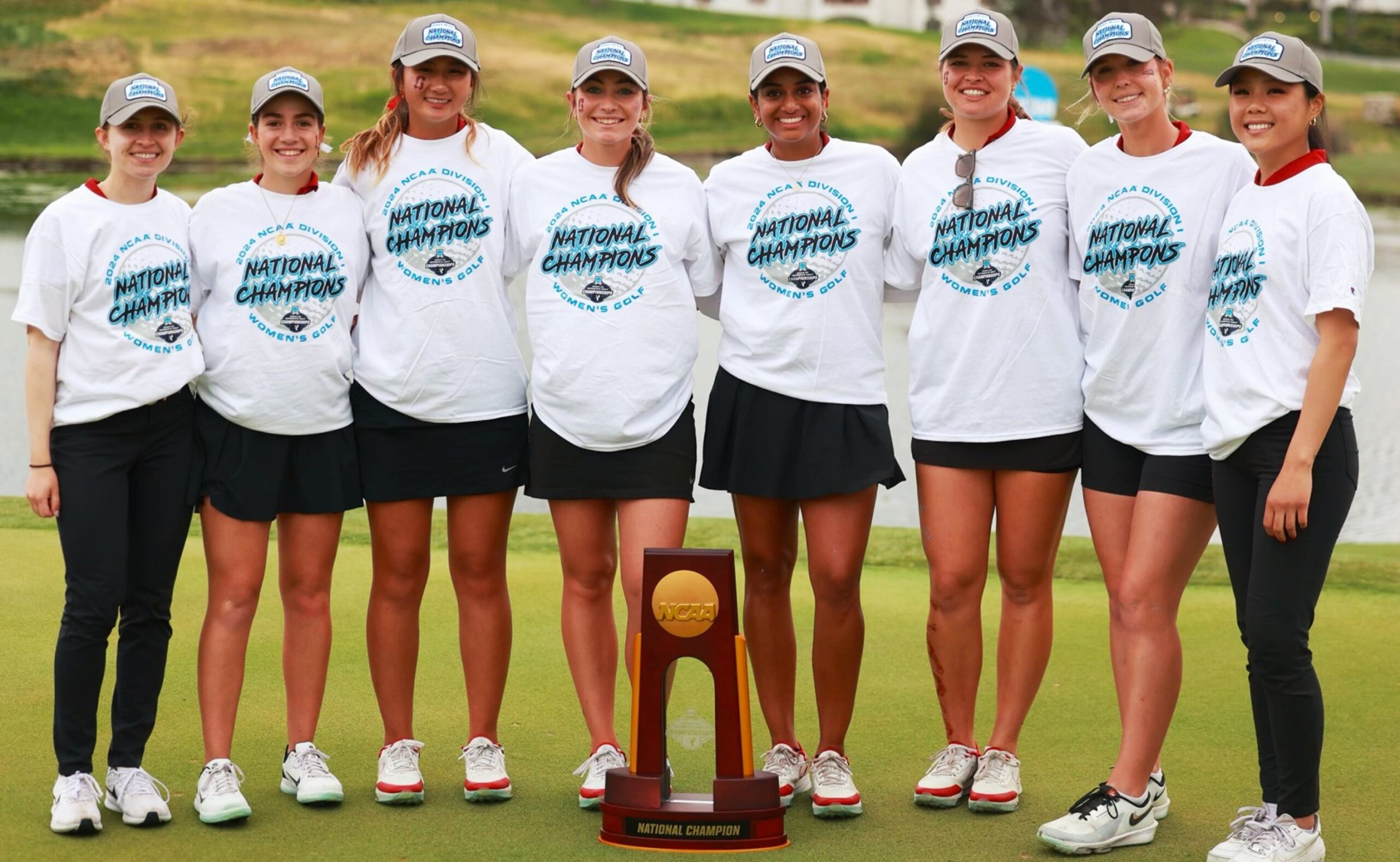
Overview of the NCAA Women’s Golf Championship
The NCAA Women’s Golf Championship is an annual tournament that showcases the best collegiate golf teams in the United States. It is organized by the National Collegiate Athletic Association (NCAA) and holds significant importance in the world of collegiate golf.
History and Evolution
The championship has a rich history that dates back to its inaugural year in 1982. Over the years, it has evolved into a highly competitive event, attracting top talent from universities across the country. The tournament has seen advancements in technology, course conditions, and the overall level of play, making it a highly anticipated event in the golfing community.
Qualification and Tournament Format
Teams qualify for the NCAA Women’s Golf Championship through a series of regional competitions. The top teams from each region earn a spot in the championship. Additionally, a select number of individual golfers who do not qualify with their teams can also participate. The tournament follows a stroke play format, where teams compete over multiple rounds to determine the overall winner.
Venues and Notable Champions
The championship is held at various prestigious golf courses across the country. These venues are carefully selected to provide a challenging and fair playing field for the competing teams. Throughout its history, the NCAA Women’s Golf Championship has produced numerous notable champions who have gone on to achieve success at the professional level. Some of these champions include Lorena Ochoa, Annika Sörenstam, and Stacy Lewis.
Key players and teams in the NCAA Women’s Golf Championship

The NCAA Women’s Golf Championship is known for showcasing some of the most talented players and teams in college golf. These athletes have worked hard to earn their spots in the championship and are ready to compete at the highest level.
Top players to watch out for
- Emma Spitz (UCLA): Spitz has been a standout player for UCLA, consistently delivering strong performances. Her accuracy off the tee and precise iron play make her a formidable competitor.
- Rose Zhang (Stanford): Zhang is a rising star in women’s golf. Her powerful drives and excellent short game have helped her secure impressive victories throughout the season.
- Rachel Heck (Stanford): Heck is another player to keep an eye on. She has demonstrated incredible consistency and mental toughness, making her a threat in any tournament.
- Ingrid Lindblad (LSU): Lindblad has been a key player for LSU, leading her team to success with her strong all-around game. Her ability to handle pressure situations sets her apart.
Top-ranked teams and their chances of success
Several teams have shown their dominance throughout the season and are expected to perform well in the NCAA Women’s Golf Championship.
| Team | Ranking | Chances of Success |
|---|---|---|
| Stanford | 1 | Stanford has consistently proven themselves as a powerhouse in women’s golf. With a talented roster and strong performances throughout the season, they are one of the top contenders for the championship. |
| UCLA | 2 | UCLA has a strong team led by talented players like Emma Spitz. Their consistent performance throughout the season puts them in a favorable position to compete for the championship. |
| LSU | 3 | LSU has had a stellar season, thanks in large part to the contributions of players like Ingrid Lindblad. Their solid team play and competitive spirit make them a team to watch out for. |
Playing styles and strengths
Each team and player in the NCAA Women’s Golf Championship brings their own unique playing style and strengths to the tournament.
Stanford is known for their consistent play and ability to perform under pressure. They have a balanced team that excels in all aspects of the game.
UCLA, on the other hand, relies on their accuracy and precision. Their players have a strong short game and are skilled at navigating challenging courses.
LSU is characterized by their competitive spirit and ability to rally under difficult circumstances. They have a never-give-up attitude and thrive in high-pressure situations.
Successful strategies and techniques
Successful teams in the past have employed various strategies and techniques to achieve their goals in the NCAA Women’s Golf Championship.
One common strategy is meticulous course management. Teams carefully analyze each hole and make strategic decisions to maximize their scoring opportunities.
Another key technique is effective communication and teamwork. Players and coaches work together to develop game plans and support each other throughout the tournament.
Successful teams also emphasize mental toughness and resilience. They train to stay focused and confident, even in challenging situations, which can make a significant difference in their performance.
Notable moments and records in the NCAA Women’s Golf Championship
The NCAA Women’s Golf Championship has seen its fair share of memorable moments and impressive records throughout its history. From incredible comebacks to record-breaking performances, this championship has provided plenty of excitement for golf fans.
Memorable moments
One of the most memorable moments in the history of the NCAA Women’s Golf Championship occurred in 2019 when the Wake Forest Demon Deacons secured their first-ever championship title. It was a thrilling finish as they came from behind to beat the defending champions, the Arizona Wildcats, by one stroke. This victory marked a historic moment for the Wake Forest program and will forever be remembered as a great underdog story.
Another unforgettable moment took place in 2015 when the Stanford Cardinal won their first NCAA Women’s Golf Championship since 1992. The team was led by Mariah Stackhouse, who made history by becoming the first African-American golfer to win an NCAA team title. Stackhouse’s incredible performance and the team’s triumph served as an inspiration for aspiring golfers from diverse backgrounds.
Notable records
The NCAA Women’s Golf Championship has witnessed some remarkable records set by both teams and individuals. In 2018, the University of Alabama set a new tournament record by finishing 33 strokes under par, surpassing the previous record held by the University of Southern California. This exceptional performance showcased the dominance of the Alabama team and their ability to excel under pressure.
On the individual level, Jennifer Kupcho made history in 2019 when she recorded the lowest final round score in NCAA Women’s Golf Championship history. Kupcho, representing Wake Forest University, shot an impressive 67 in the final round to secure the individual title. Her exceptional play and record-breaking achievement will forever be etched in the championship’s history books.
Underdog success stories
The NCAA Women’s Golf Championship has seen its fair share of underdog teams and players who have defied the odds and achieved remarkable success. In 2017, the University of Washington, considered an underdog, shocked the golfing world by clinching their first-ever national championship. Led by standout performances from players like Julianne Alvarez and Sarah Rhee, the Huskies proved that anything is possible in the world of college golf.
Similarly, in 2014, Doris Chen of the University of Southern California emerged as an unexpected champion. Chen, who was not considered a favorite going into the championship, displayed immense skill and determination to claim the individual title. Her victory served as a reminder that in golf, talent and determination can overcome any perceived disadvantages.
Close finishes and exciting playoffs
The NCAA Women’s Golf Championship has provided thrilling finishes and exciting playoffs throughout the years. In 2013, the University of Southern California and the University of Alabama went head-to-head in a playoff to determine the team champion. After several intense holes, the University of Southern California emerged victorious, showcasing the excitement and drama that can unfold in playoff situations.
Another notable close finish occurred in 2004 when UCLA and Duke University tied for the team championship. The two teams battled it out in a sudden-death playoff, with UCLA eventually coming out on top. This nail-biting finish demonstrated the high level of competition and the fine margins that can separate the top teams in the championship.
These notable moments, records, underdog success stories, and thrilling finishes have contributed to the rich history of the NCAA Women’s Golf Championship. Each year, the championship continues to provide unforgettable moments and inspire the next generation of golfers.
Impact of the NCAA Women’s Golf Championship on collegiate golf
The NCAA Women’s Golf Championship has a significant impact on the development of young golfers and the overall landscape of collegiate golf.
Influence on the development of young golfers
The championship serves as a platform for young golfers to showcase their skills and compete against top collegiate athletes. Participating in such a prestigious event helps in their overall development by exposing them to intense competition, high-pressure situations, and different playing styles. It allows them to gain valuable experience and learn from their peers, coaches, and competitors. This exposure helps in honing their skills, improving their game strategies, and enhancing their mental toughness, which are crucial for their future in golf.
Impact on recruitment of players by colleges
Success in the NCAA Women’s Golf Championship can greatly impact the recruitment of players by colleges. Coaches closely follow the championship to identify talented golfers who perform exceptionally well under pressure. Top-performing athletes in the championship often attract the attention of college coaches, who are in search of skilled players to strengthen their teams. The championship acts as a platform for players to showcase their abilities and increase their chances of being recruited by prestigious college golf programs.
Exposure and opportunities for student-athletes
The NCAA Women’s Golf Championship provides student-athletes with exposure to a wider audience, including fans, sponsors, and media. This exposure can open doors to various opportunities, such as endorsements, scholarships, and even professional golf careers. The championship offers a chance for student-athletes to gain recognition for their hard work and dedication, which can lead to future opportunities beyond their college years. Additionally, participating in the championship allows student-athletes to network with influential individuals in the golf industry, creating connections that can be beneficial for their future endeavors.
Promoting gender equality in sports
The NCAA Women’s Golf Championship plays a crucial role in promoting gender equality in sports. By providing a platform exclusively for women golfers, the championship showcases their talent, skill, and dedication. It helps in breaking down gender barriers and stereotypes, highlighting the capabilities of female athletes. The championship sends a powerful message that women’s golf deserves recognition and support, contributing to the overall progress of gender equality in the sports world.
FAQ Section
How do teams qualify for the NCAA Women’s Golf Championship?
Teams earn their spots in the championship through regional competitions, where they compete against other universities to secure one of the available berths.
What is the format of the NCAA Women’s Golf Championship?
The championship follows a stroke-play format, where teams and individual players accumulate scores over multiple rounds. The top teams and individuals advance to the match-play portion of the tournament, culminating in the crowning of a champion.
Who are some notable past champions of the NCAA Women’s Golf Championship?
Notable past champions include names like Annika Sorenstam, Lorena Ochoa, and Jennifer Kupcho, who have gone on to achieve great success in professional golf.
How does success in the NCAA Women’s Golf Championship impact player recruitment?
Success in the championship can greatly enhance a player’s visibility and reputation, attracting the attention of college recruiters and potentially opening doors to scholarships and opportunities at renowned golf programs.
What role does the NCAA Women’s Golf Championship play in promoting gender equality in sports?
The championship serves as a platform to showcase the incredible talent and skill of female golfers, contributing to the broader movement of empowering women in athletics and breaking down barriers in the world of sports.




